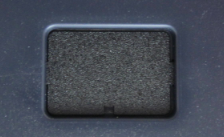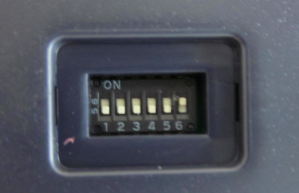CRD97xx
The Opticon CRD-97xx cradles are built as companion devices for the OPL-97xx series of data collection terminals. There are a multiple models to support different usage scenarios. On the whole, however, the basic features of the cradles are the same.
Setup
Power
All CRD-97xx cradles require a separate adapter to provide enough power to allow for charging an OPL-97xx terminal device in all situations (idle, transmitting, etc). Even in the USB configuration this power adapter is required.
Data
The main difference between the various models of the Opticon CRD-97xx is in the type of connection to the PC for data transmission. Details for each connection type follow. It is important to note that some cradles contain multiple data connection types. In all cases only one type should be used at any given time.
USB
On the back panel you will find a square-shaped USB-B plug type. This plug shape is common to modern USB printers. As this connection type is USB-VCP (serial port emulation) it requires USB drivers on the PC side. These drivers can be downloaded from the links in the Downloads section on this page.
RS-232
One the back panel of a cradle that supports RS232 connection types you will find a RJ-45 plug. This is the same connector type used in standard Ethernet internet connections. No drivers are required for this connection type but it does require that your PC have a serial port connection available (third party RS-232 <-> USB adapters are known to work well with these cradles should your PC lack a serial port).
Analog Modem
On the back panel of the CRD-9726 you will find a standard RJ-11 plug commonly used for a landline telephone. These cradles work in much the same way as PC modems. Note that special software for your OPL-97xx terminal would be required for this feature to operate as expected.
GSM Modem
The CRD-9727 contains a GSM modem inside (SIM card required, not included). This allows your OPL-97xx devices to communicate with any internet resource through your carriers data network.
Baudrate
Most CRD-97xx cradles allow the baudrate (the speed at which data is transmitted) to be manually configured via a series of DIP switches on the bottom of the cradle. It is also optional to select an 'auto' baudrate at which point the cradle will retransmit any incoming data at the same baudrate at which it was received. Effectively the cradle becomes a passive device in this mode. Some implementations of the OPL-97xx terminals require specific baudrates manually configured on the cradle. While this is rare it is important to know how to change this setting should the occasion arise.
- Remove DIP Switch Cover
- Adjust switches according to the table found here.
- Replace DIP Switch Cover
DIP Switches
 |
 |
| Switch | On | Off |
|---|---|---|
| SW1 | Baudrate* | Baudrate* |
| SW2 | Baudrate* | Baudrate* |
| SW3 | Baudrate* | Baudrate* |
| SW4 | Not Used | Not Used |
| SW5 | Not Used | Not Used |
| SW6 | Auto Baudrate (Controlled by PC settings) |
Manual Baudrate (controlled by dip switches 1-3) |
| Baudrate | SW1 | SW2 | SW3 |
|---|---|---|---|
| 2400 | ON | OFF | OFF |
| 4800 | OFF | ON | OFF |
| 9600 | ON | ON | OFF |
| 19200 | OFF | OFF | ON |
| 38400 | ON | OFF | ON |
| 57600 | OFF | ON | ON |
| 115200 | ON | ON | ON |